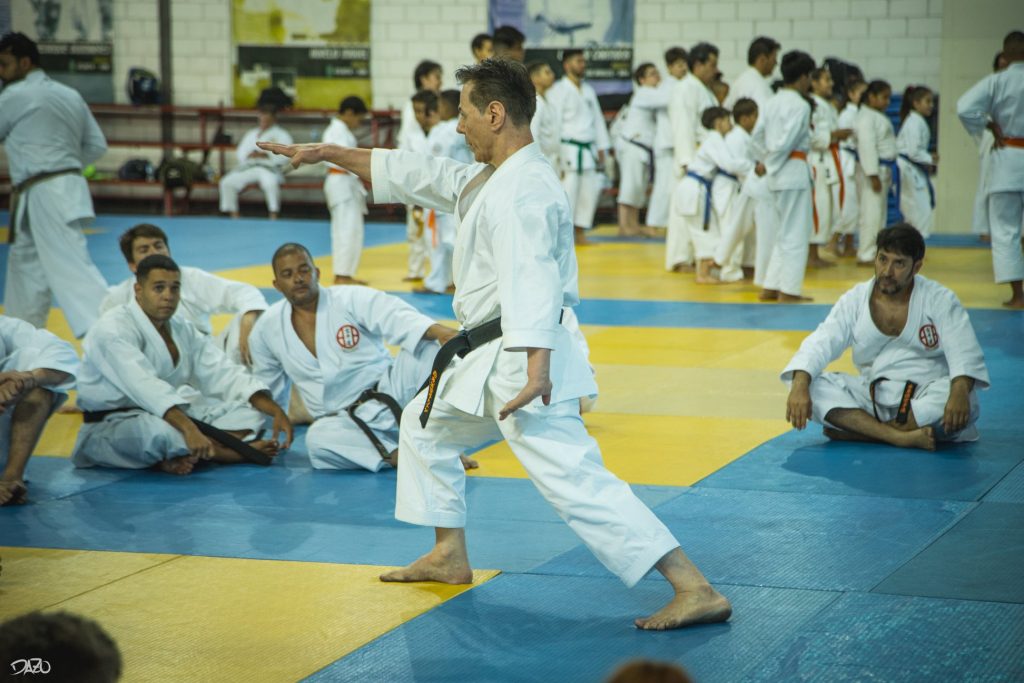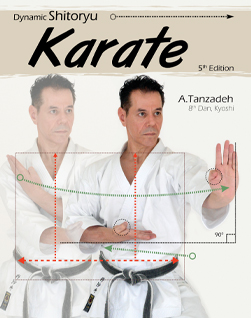13 Fundamental points in kata that must be considered while practicing
- Yoi no Kishin – Preparing one’s mind – Readiness, concentration, will, and determination against opponent before starting kata.
- Chikara no KyoJaku – Strength, power – Correct method in using power, the amount of power used for each kata movement and position.
- Waza no KanKyu – Speed in technique – Speed and agility used in each kata movement and position.
- Tai no ShinShuku – Expansion and contraction of body – The amount of contraction and expansion for each movement.
- Kokyu – Breathing – Breathing, correct exhalation and inhalation in each kata movement.
- Chakugan – Directing one’s attention (to), Aim (at), Eye Contac. – Look spot, considering the aim and destination of technique.
- Kiai – Force or a shout dealing with a matter as concentrating mind at one point – Shout, in one or more certain points, shout shows the soul of fight of kata. Additionally, the whole conducted power is released.
- Hyoshi – Timing, a rhythm, a measure, tempo – Rhythm. Proper accentuation and flow of the movement of kata and each combination of kata.
- Kime – A conclusion, an end, a decision, reaching a settlement. – Focal point or Focus refers to the concentration of all the energy of the body in the instant a particular technique (blocks, kicks, punches and…) makes contact with its target.
- Antei – Stability, steadiness – Balance. Stability, adjusting, figure and using the proper and correct stance in each movement.
- Keitai no Hoji – Keeping a form, a shape – Using each technique in its proper place and in a good shape.
- Zanshin – Remaining attention, Awareness – Being fully aware, being in guard position at the end of kata. Looking towards the side kata is finished.
- In-Yo – Yin-Yang – Active and passive (i.e. knowing whether you are attacking or defending) – Two opposite elements in nature and in human body – Yin (陰 or 阴 “shady place, north slope, south bank (river); cloudy, overcast”; Japanese: in or on; Korean: 음, Vietnamese: âm) is the dark element: it is passive, dark, feminine, negative, downward-seeking, consuming and corresponds to the night. Yang (陽 or 阳 “sunny place, south slope, north bank (river), sunshine”; Japanese: yō; Korean: 양, Vietnamese: dương) is the bright element: it is active, light, masculine, positive, upward-seeking, producing and corresponds to the daytime. Yin is often symbolized by water and earth, while yang is symbolized by fire and air. Yin (dark) and yang (light) are descriptions of complementary opposites as well as absolutes. Any yin/yang duality can be viewed from another perspective. All forces in nature can be seen as existing in yin or yang states, and the two produce constant movement/force of the universe. As the universe is relative and interdependent, the determination of which thing is yin or yang depends on what is its complementary opposite – that is, the frame of reference. This yin-and-yang relativity concept forms the core in understanding of many Chinese philosophic classics as embodied in the Tao Te Ching.








